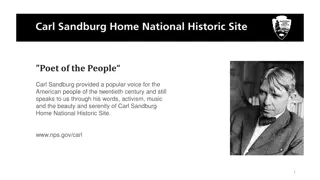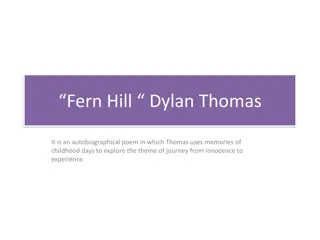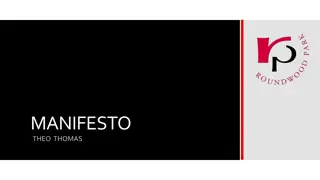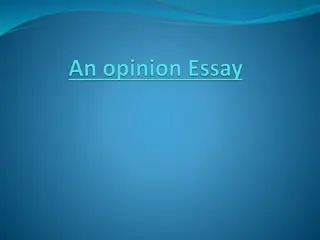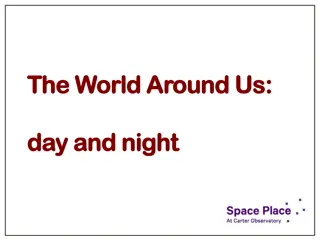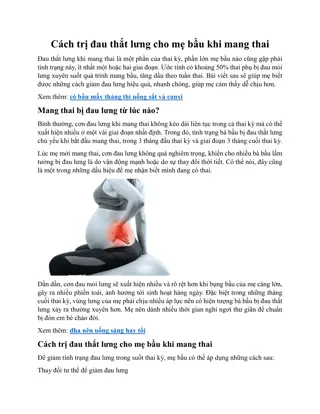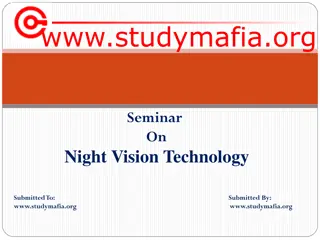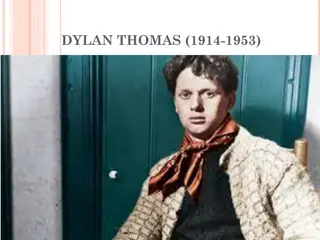Dylan Thomas: Do Not Go Gentle Into That Good Night
Dylan Thomas' powerful poem 'Do Not Go Gentle Into That Good Night' explores themes of mortality, defiance against death, and the passage of time. Through vivid imagery and structured form, Thomas urges readers to confront the inevitability of death with fierce resistance. The poem's villanelle structure, iambic pentameter, and repetitive refrain enhance its emotional impact, making it a timeless piece in literature that resonates with the human experience of facing mortality.
Download Presentation

Please find below an Image/Link to download the presentation.
The content on the website is provided AS IS for your information and personal use only. It may not be sold, licensed, or shared on other websites without obtaining consent from the author.If you encounter any issues during the download, it is possible that the publisher has removed the file from their server.
You are allowed to download the files provided on this website for personal or commercial use, subject to the condition that they are used lawfully. All files are the property of their respective owners.
The content on the website is provided AS IS for your information and personal use only. It may not be sold, licensed, or shared on other websites without obtaining consent from the author.
E N D
Presentation Transcript
Do not go gentle into that good night Dylan Thomas | 1914-1953
Dylan Thomas reads Do not go gentle into that good night Though wise men at their end know dark is right, Because their words had forked no lightning they Do not go gentle into that good night. Good men, the last wave by, crying how bright Their frail deeds might have danced in a green bay, Rage, rage against the dying of the light. Wild men who caught and sang the sun in flight, And learn, too late, they grieved it on its way, Do not go gentle into that good night. Grave men, near death, who see with blinding sight Blind eyes could blaze like meteors and be gay, Rage, rage against the dying of the light. And you, my father, there on the sad height, Curse, bless, me now with your fierce tears, I pray. Do not go gentle into that good night. Rage, rage against the dying of the light. http://en.wikipedia.org/wiki/Dylan_Thomas Dylan Thomas reciting his villanelle 'Do Not Go Gentle into that Good Night' Do not go gentle into that good night, Old age should burn and rave at close of day; Rage, rage against the dying of the light.
What is the Night? Dylan Thomas wrote the poem when he learned his father was dying; the theme is the inevitability of death & not going down without a fight. It is said his father was possibly also going blind at the time, a potential reference to darkness. Sadly, Thomas himself passed away about 2 years after writing the poem about his father s approaching death.
Form & Meter The villanelle: 19 lines divided into five three-line stanzas & a sixth stanza with four lines Follows iambic pentameter Rhyme scheme: ABA ABA ABA ABA ABA ABAA Use of refrain & repetition
Poetic Terms Meter: the unit of rhythm in poetry Iambic Pentameter: a common meter consisting of ten syllables per line Refrain: a stanza or group of lines that is repeated throughout the poem
Symbols & Imagery Sunrise & Sunset Light vs. Dark Falling : Lightning, meteors, etc.
Themes Mortality: inevitability of death & the struggle against it Transience: passing of time, beauty in the temporary Wisdom: wise men at their end know dark is right (line 4)
Used as a recurring motif in the 2014 film Interstellar as a metaphor for venturing into the vast unknown, conflicted by the possibility of fear, failure, and death.
In 1959, musician Robert Zimmerman began introducing himself as Bob Dylan while performing on the folk music circuit. This was a nod to Dylan Thomas, whose poetry had influenced the songwriter, shaping his lyrical style & song choices. A central theme in most of Thomas poetry is conflict: conflict between the content and the structure of the poem, conflict between the speaker and subject, etc. Ex: In Do not go gentle into that good night, the speaker is at odds with death. This theme of conflict can also be seen in the work of Bob Dylan, who many consider to be the greatest protest songwriter of all time. Dylan always seems to be at odds with something, whether it be racism in Oxford Town or war in Masters of War. Dylan s poetry, just like Thomas poetry, is a poetry of conflict. [source: pencils.com]
A Tale of Two Dylans Quiz: Bob Dylan or Dylan Thomas?




